Which fruits should not be eaten by diabetics? What should I pay attention to?
Nutritionist sugar to answer for everyone. First of all, you have to understand that not all diabetics can eat fruit, only patients with better blood sugar control (fasting <7.0, meal two <10.0) are allowed to eat fruit in moderation, while patients with higher blood sugar is best not to eat fruit, only with some low sugar content of melons and fruits instead of, for example, tomatoes, cucumbers, vegetable gourds and so on.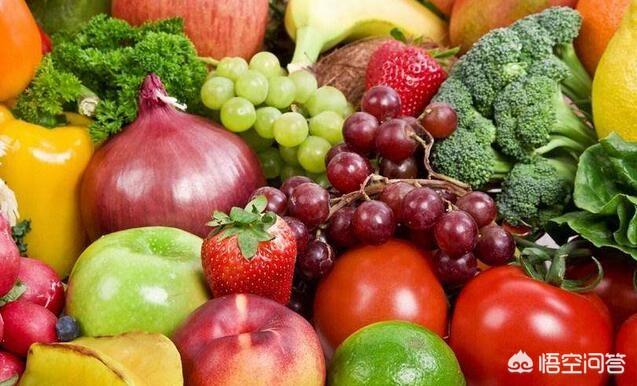
Which fruits should not be eaten by diabetics?
Fruits with high sugar content, such as durian, pineapple honey, banana, mangosteen, jujube, lychee, longan, ginseng fruit, mango and persimmon. There are also some fruits with high sugar content that you should be aware of, such as dragon fruit and kiwi, which are not sweet to eat, but are not low in sugar. Especially the dried fruit snacks made from these fruits, their sugar content is even higher, even just two more bites, blood sugar will immediately soar.
Some fruits, although not high in sugar, have a high glycemic index GI value, such as watermelon (GI75) and pineapple (GI66), and diabetics should be careful when eating them and try to eat them sparingly.
Diabetic patients are suitable to eat some low sugar fruits, such as strawberries, blueberries, grapefruit, snowdrops, guava, cherries, poppies and so on. The recommended serving size is no more than 200 grams a day, and you can divide the fruit into 2 portions of 100 grams each time and put them in extra meals, such as half-morning, half-afternoon, and before bedtime. Eating fruits in this way has little effect on blood sugar, while the vitamins, minerals and active ingredients rich in fruits are very beneficial in preventing complications.
I hope the answer of sugar can help you, more diabetes diet encyclopedic knowledge welcome to pay attention to the sugar man health network!
Which fruits and vegetables should not be eaten by diabetics? What should I pay attention to? For diabetic patients, eating fruits is of course to pay attention to the glycemic index, high glycemic index of food, for diabetic patients are at risk, but then, to measure the diabetic patients can eat what food is two standards, one is the glycemic index, the other is called the glycemic load , so even for the high glycemic index of food, diabetic patients as long as to comply with a few principles, can also be relieved! So even for foods with a high glycemic index, diabetics can still eat them safely as long as they follow a few principles.
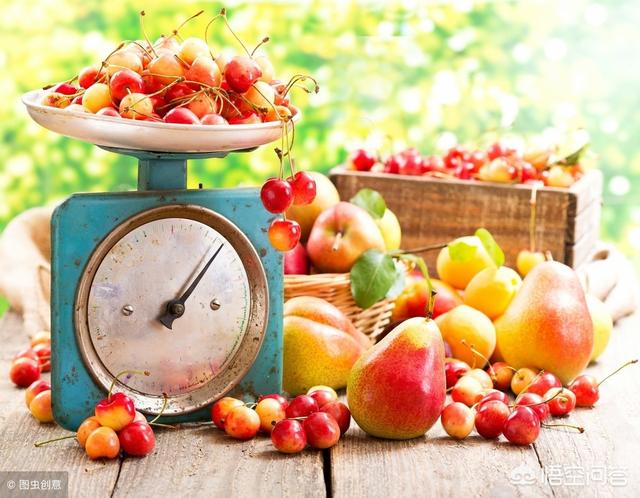
Then today from the fruit, itself high glycemic index, not suitable for diabetes, there are many fruits, such as watermelon, pineapple, melon, banana, apricot, mango, fresh jujube, cantaloupe, etc., although these fruits have a high glycemic index, but from the point of view of the glycemic load, small amounts of some can still be eaten, the specific amount of intake can be referenced in the following chart, but the specific consumption of need to pay attention to the first. Eat at the time of adding meals, do not eat directly after meals. Second, eat a small amount. Third, cut small pieces to eat, cut the size of the best food thumb a knuckle size, fourth, eat slowly, the best with milk to eat, both can delay postprandial glucose, but also can enhance the sense of satiety, to help control weight.
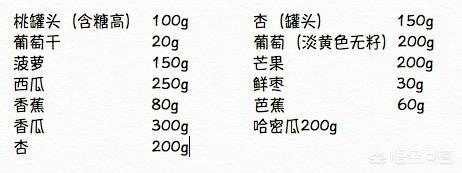
However, if you eat high glycemic index fruits, you should pay attention to control the intake of other foods, especially other fruits, just don't eat more, too much fruits, even low glycemic index fruits, is not conducive to weight control, and for diabetic patients, it is also important to control weight.
In China's diabetes dietary guidelines, one of them says to eat more vegetables and fruits in moderation. Then what exactly is called fruit in moderation? It mainly includes the following two aspects.
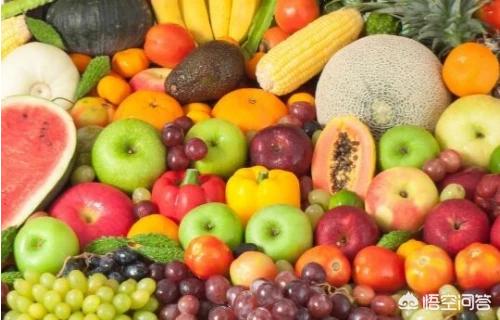
Which fruits are off limits to diabetics and which are okay to eat?
Diabetics with unstable blood glucose control are advised not to consume any fruits, no matter what they are, because compared with vegetables, fruits contain quite a lot of sugar-water compounds; if blood glucose control is stable, it is also recommended that it is best not to eat those fruits with a high glycemic index, such as watermelon, grapes, mango, pineapple, dates, etc., and to try to choose those fruits with a lower glycemic index, such as cherries, plums, peaches, pears and grapefruit, etc. .
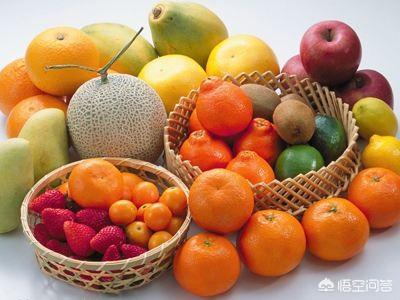
What do I need to watch out for when eating fruit?
Diabetics with stable blood sugar need to be careful about the total amount and timing of whatever fruit they eat.It is recommended that the daily intake of fruit about 200g, divided into two times, respectively, between breakfast and lunch, lunch and dinner, but do not eat fruit immediately after eating, it is best to eat 1 to 2 hours after the meal, so as not to cause large fluctuations in blood glucose.
Also, be sure to monitor changes in blood glucose. Patients with stable blood glucose should monitor their blood glucose at least two to four times a week, including fasting and postprandial blood glucose; and monitor glycated hemoglobin at least once in three to six months.
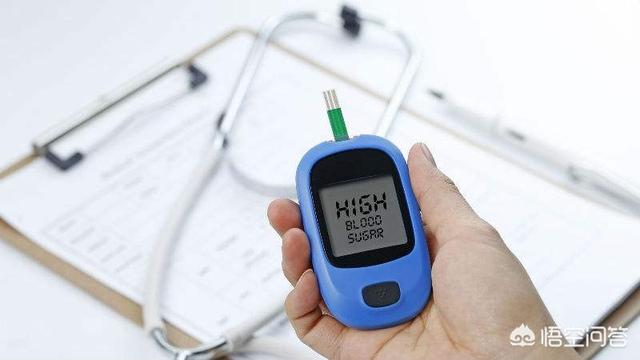
I hope my answer helps you.
I am physician Yang Hao, specializing in common and multiple diseases, chronic disease management, health science.
Welcome to follow "Dr. Yang Hao" to learn more about medical knowledge.
Sharing my personal opinion, the
There are many fruits that diabetics are not allowed to eat, I am listing the following fruits fruits that can be eaten sparingly:Plums, watermelon, melon, oranges, lemons, grapes, loquats, pineapples, strawberries, sugar cane, coconuts, cherries, olivesetc. Diabetic patients should also control their diet and try to avoid the following kinds of food: a. Foods containing more salt. Eating too salty can cause blood volume to increase and lead to increased blood pressure, aggravate the burden on the kidneys as well as the fundus, prompting or aggravating vascular complications. Second, too greasy food. Do not eat greasy food, especially food containing animal fats and oils, such as fried food, animal fats and oils made of food. Because these foods contain a lot of saturated fatty acids, it can make the blood fat blood viscosity rise, prompting or aggravating atherosclerosis. Third, try not to eat spicy stimulating food. Such as chili, pepper, mustard and so on. Fourth, you can't eat food with high sugar content. After consuming it will make the blood sugar of diabetes rise rapidly, you can eat more fiber-rich foods, such as celery, bitter melon, coarse grains, etc., as well as calcium-rich, vitamin B-rich, vitamin C-rich foods, and you can also eat more fresh vegetables, which are also excellent for controlling blood sugar.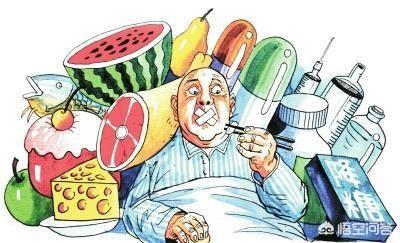
Diabetics should eat less fruit.
Eat less cause:Fruit should be eaten sparingly for diabetes. Fruits contain a lot of vitamins, fiber and minerals, a small amount of consumption can be supplemented with nutrients, which is beneficial to diabetics. However, fruits contain sugar glucose, fructose and sucrose, diabetic patients eat too much can cause blood sugar fluctuations, is not conducive to the control of the disease, so diabetic patients should eat less fruit.
How to eat fruit better.
The fruit can be consumed directly, with milk, etc. to make a fruit loaf for consumption, and is recommended for diabetic patients to consume as an additional meal between meals when their blood sugar is stable.
dietary recommendations.
The key to diabetes treatment is dietary control and life regulation. Diabetes dietary treatment is one of the most basic treatment measures for diabetes, without strict dietary treatment as a prerequisite, it is difficult to control blood glucose in the normal range: 1, the principle of diet to eat small meals, no smoking and alcohol; 2, should not consume high-sugar, high-fat foods, such as honey, chocolate, desserts, butter, cream, etc.; 3, you can consume a moderate amount of soybeans and their products, coarse grains, etc.; 4, less fruits, consumption of When to low sugar content as the principle of choice, at the same time need to be based on its sugar content, calculate the caloric energy. Convert it to staple food and reduce or deduct the amount of staple food to keep the total calories unchanged. It is not advisable to eat fruit with every meal, and it is generally considered more appropriate to take a small amount between meals (when blood sugar drops).
Nowadays, diabetes is becoming more and more serious among young people, mainly because of irregular work and rest, smoking, drinking and eating foods high in sugar and salt. So I advise you to take precautions as early as possible while you are still young and pay attention to your diet and exercise.
The above is only my personal opinion, and I hope you will give me more advice if there is something wrong or missing! Finally, I wish you all good health.
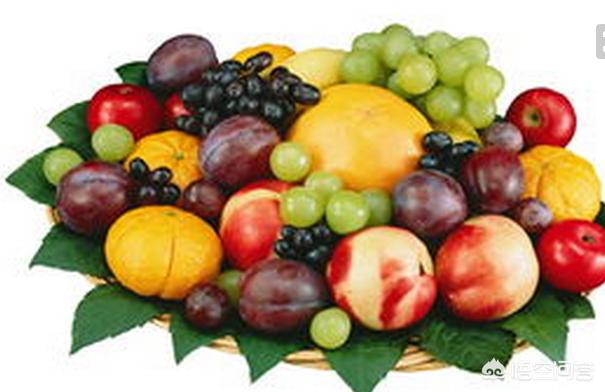
Fruit is a kind of food in our daily diet, especially the elderly and children and women love fruit more. In summer, a large number of fruits are on the market, which makes people even more joyful. But for diabetics, because the fruit is sweeter, do not dare to eat fruit. In fact, diabetics are not unable to eat fruit, but some fruits as little as possible.
Most people will choose fruits with high sweetness when they are shopping for fruits, thinking that the sweeter the fruit is, the more sugar it contains. In fact, the sweetness of the fruit is not only directly related to the sugar content of the fruit, but also with the type of fruit, astringent, sour flavor has a very important relationship, such as pineapple and strawberries. Pineapple in our eyes is not a relatively sweet fruit, often with a little sour; strawberry eating taste to be far sweeter than the pineapple, but in fact the sugar content of pineapple is not lower than strawberry, the same 100 grams of fruit, pineapple's sugar content is almost twice as much as strawberry's sugar content. The reason for this is that the acidity of pineapple is stronger, masking the sweetness.
Diabetics should pay attention when choosing fruits, try to choose fruits with lower glycemic index and avoid fruits with high sugar content and high glycemic index. Durian is the favorite of many people, is also one of the higher nutritional value of the fruit, but the durian sugar content is as high as 27%, such a fruit for diabetics is undoubtedly worse, is not conducive to the regulation of blood sugar. Avocados have a lower sugar content, a raw avocado contains only about 1 gram of sugar, very suitable for dieters or diabetics. Cranberries and strawberries are also great for diabetics, containing far less sugar than the common fruits of apples and pears.
The glycemic index is a good basis for diabetics to choose food. For diabetics, try to choose fruits with a low glycemic index. Fruits with a high glycemic index can be eaten, but you should pay attention to the amount of intake, not too much at a time, and choose to eat between meals. For fruits with skin, try not to peel them and eat them. For example, apple skin and pear skin, dietary fiber is mainly present in the skin, can reduce postprandial blood glucose and insulin elevation response, fruit with skin to eat better.

If you have a good suggestion for this issue, you are welcome to leave a comment below!
I am Wang Guizhen, today's headline Wukong Q&A signed author, welcome to pay attention to [Wang Guizhen nutritionist] headline number, together to talk about health, so that we eat healthy, eat at ease!
I. How does diabetes happen?
We all know that diabetes is generally categorized into type 1 diabetes, type 2 diabetes, gestational diabetes and other types of diabetes. As a metabolic disease, diabetes mellitus is a metabolic disorder characterized by hyperglycemia, which can cause systemic metabolic disorders. Long-term intake of high-energy diets, so that the blood glucose level is chronically high, prompting a sustained increase in insulin secretion, and ultimately damage to the structure and function of pancreatic betacells, leading to absolute or relative insufficiency of insulin secretion, triggering diabetes mellitus. In this way and everyone to explain, diabetes is not only high blood sugar, sometimes also low blood sugar Oh ~!
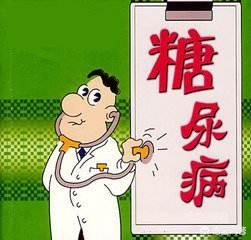
Second, why do diabetics need to eat fruit?
Sure.
We all know that fruits contain a lot of fructose, the speed of fructose into the blood, significantly slower, but also need to be further converted into glucose or other metabolic molecules in the liver, so all the physiological changes and steps that fructose has gone through take a certain amount of time, and the mechanism of transit is very sluggish. It causes a significantly slower and more subdued rise in blood sugar and hardly triggers insulin secretion. This is the reason why fructose has become a specialized sugar for many diabetics.
In addition, fruits are also rich in fiber and hemifiber, which can lower fasting blood sugar and delay the body's absorption of other carbohydrates, lower postprandial blood sugar and improve glucose tolerance.
Third, which fruits diabetics can not eat?
Fruits can be eaten, but not casually. This is because fruits contain fructose as well as glucose and sucrose in varying proportions.
After entering the human body, glucose will directly enter the bloodstream to be absorbed and utilized by the body, which in turn will cause a rapid rise and fall of blood glucose, and sucrose will be broken down into glucose and part of the fructose, which are not conducive to the stability of blood glucose.
Fruits are generally categorized into kernels, drupes and berries, and different types of fruits contain different proportions of fructose, glucose and sucrose.
Kernel fruits such as apples and pears are dominated by fructose;
Nuclear fruits, such as peaches, plums, and citrus are dominated by sucrose;
Berries, such as grapes and strawberries are dominated by glucose and fructose.
Considering this dimension, when we select fruits.Kernels>Drupes>BerriesIn addition to the sugar content, we can also consider the fruit's content of dietary fiber or other nutrients such as vitamins.
Overall, apples and pears can be consumed regularly, but grapes and strawberries should be eaten sparingly.
It is worth noting thatTry to choose fresh fruits rather than the various dried fruit products, which have had the water removed and extra sugar added in the process of making them.
additionallyCucumbers and tomatoes, which are recommended as fruits and vegetables, are even better choices.
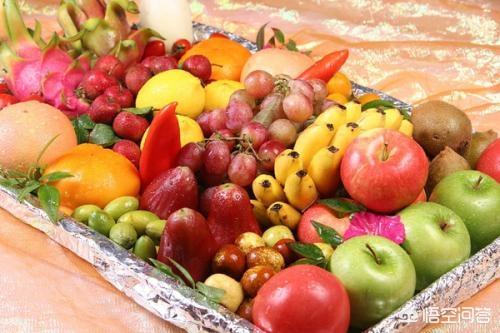
IV. What should I pay attention to when eating fruits?
1. Correct choice:As mentioned above, choosing the right type of fruit can be considered in terms of sugar content as well as other nutrient requirements;
2. How much you eat is key:Even if the fruit is suitable, you should not eat it greedily;
3. When to eat:The best time to eat fruit is between meals, which can be used as an additional meal, so that you can also avoid hypoglycemia;
4. Frequency issues:It can be done in small quantities;
5. Type matching:You can mix and match a variety of fruits, but be careful to ensure that the total amount does not increase.
Above, I hope to be helpful to you, you often eat the fruit welcome to the discussion forum to leave a message, to see if it is not eating the right?
Fruit is very tasty and nutritious, sugar lovers feel free to eat is, do not listen to their so-called expert advice, what to eat, a little attention to do not overeat and binge drinking can be.
Thanks for the invite.
Sugar lovers in their own blood sugar is more stable period in fact, there is no certain can not intake of fruit, but people and fruit should pay attention to the amount of control, after all, the fruit belongs to the sugar content of the higher food。
Many sugary foods are theoretically off-limits to sugar lovers, but in practice there are no foods that are off-limits as long as they are eaten in a way that ensures that their blood sugar stays relatively stable. Of course, there are foods that are appropriate and inappropriate for sugar users, and what is generally appropriate or inappropriate for sugar users to consume.The main food GI (glycemic index) this measure, glycemic index on behalf of the food unit time to let our blood sugar ability to rise, if the higher the higher the food is more likely to raise blood sugar, not suitable for sugar lovers to eat, the lower is suitable for sugar lovers to eat。
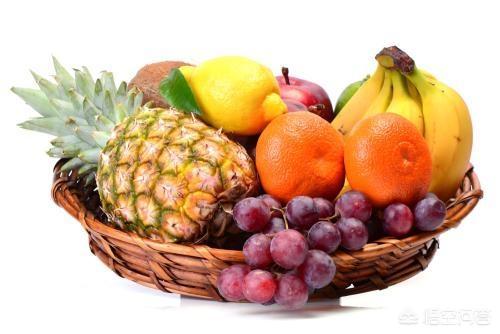
In general, foods above 55 are mediumHigh GI foodsThe GI of fruits is not suitable for sugar lovers to eat. Daily we eat fruits in the GI higher fruit has a higher total sugar content of the fruit, or one of the sucrose-based fruits (fruits have sucrose, fructose, glucose three in the species, and sucrose will eventually break down into glucose to have an impact on blood glucose), for exampleSuch as pineapple, mango, grapes, lychee, longan, dragon fruit, durian, etc.These fruits are best consumed at a stage when one's blood sugar is relatively stable, more often between meals, when blood sugar is lower, and preferably no more than 100g at a time;Some of the more suitable for sugar lovers, low glycemic index of the fruit: such as apples, pears, grapefruit, kiwi, strawberries, cherries, plums, apricots, crisp peaches, etc.. It is best not to eat fruit immediately after a meal. Blood sugar is already in a continuous rising phase after a meal, and eating fruit at this time will have a greater impact on blood sugar. Don't inject insulin or increase the amount of hypoglycemic drugs just to eat more fruits, which is more likely to make the blood sugar disorder and is not conducive to blood sugar control. More exercise methods to adjust blood sugar.
Eat less fruits and consume them with low sugar content as the principle of choice, while calories need to be calculated according to their sugar content. Convert to staple food and reduce or deduct the amount of staple food to keep the total calories unchanged. It is not advisable to take fruit with every meal, and it is generally considered more appropriate to take small amounts between meals (when blood sugar drops).
Sugar lovers eat fruit is preferred is low glycemic index of fruit, and eat the amount to be moderate, for those high glycemic fruits to stay away from, such as durian, mango, pineapple, sugar cane and so on these high starch content, high sugar content, and easy to fire fruits do not eat.
Fruits with high sugar content, such as durian, pineapple honey, banana, mangosteen, jujube, lychee, longan, ginseng fruit, mango and persimmon. There are also some fruits with high sugar content that you should be aware of, such as dragon fruit and kiwi, which are not sweet to eat, but are not low in sugar. Especially the dried fruit snacks made from these fruits, their sugar content is even higher, even just two more bites, blood sugar will immediately soar.
This question and answer are from the site users, does not represent the position of the site, such as infringement, please contact the administrator to delete.